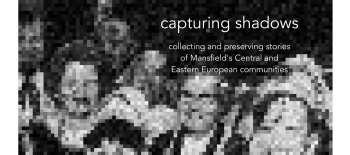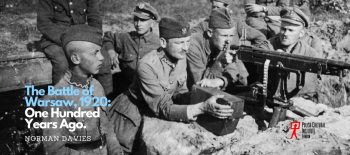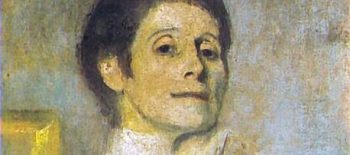When I first visited Poland, I was seriously impressed by the history surrounding me. It helped that I was in Warsaw, a city where you can bounce from grandiose socialist realism to bullet-holed buildings with the click of a finger. I felt the urge to visit a museum and find out more about Poland’s capital. This was easy enough to do. After going to the Warsaw Uprising Museum, I made a conscious decision to take a trip to at least one museum in every Polish town I visited. It’s been (and continues to be) an eye-opening experience.
There’s a number of new museums detailing Poland’s social, historical and cultural past. The architecture of these museums is spectacular; the sheer extent of artefacts on display inside makes for remarkably informative visits. Here’s my pick of four new museums to visit next time you’re in Poland.
Warsaw Uprising Museum
On my second day in Warsaw, I was having a chat with a young guy who ran alternative tours of the city. After I introduced myself, he wasted no time asking me whether I knew about the Warsaw Uprising. I didn’t. My new friend quickly explained how, in the summer of 1944, the Polish underground resistance and Home Army staged a 63 day uprising in Warsaw. It was the largest European attempt to liberate a city from Nazi occupation. Regrettably, it ended in the atrocious collective punishment of the near-entire destruction of the city. This was news to me – the reconstructed Old Town, communist-era apartment blocks and emergent capitalist skyscrapers of modern Warsaw show little sign of the one-time rubble wasteland.
I decided to learn more about this tragic chapter of Warsaw’s history and took the tram to Wola district, home to the Warsaw Uprising Museum. The museum is a pretty brutal experience. You take an immersive tour through numerous artefacts from those fateful 63 days, accompanied by adult and child accounts of the Nazi occupation. Large parts of the museum are reconstructed to mimic places such as the Uprising hospital and sewers. There’s also a room where you can watch City of Ruins, a 3D film shot from a plane shortly after Warsaw was destroyed. To be honest, the museum is pretty emotionally exhausting. Nonetheless, it gives you plenty of insight into Warsaw’s recent history and helps contextualise the city’s grimmer street murals.
Silesian Museum
You’ll be pleased to know that the Silesian Museum isn’t quite as downbeat as the Warsaw Uprising Museum. When I heard about Katowice, a town at the heart of Poland’s former coal-mining metropolis in Upper Silesia, I knew I had to visit. I was intrigued to find out if Katowice’s newest museum would riff on its industrial past and I wasn’t disappointed. The Silesian Museum was built inside the Katowice Coal Mine, a site that operated for over 170 years before its closure in 1999. You can’t really miss it – the first thing I noticed was the proud mine shaft hoist tower, which now functions as an urban viewing tower. Next, you see a series of glass buildings that bathe the museum foyer in beautiful natural light. The main collections are all housed underground in repurposed tunnels and shafts. And what a set of collections they are.
The Gallery of Polish Art (1800-1945) and Gallery of Polish Art (after 1945) provide a wonderful overview of the various schools of painting, drawing and sculpture across Poland’s recent past. I was particularly thrilled to spot dystopian surrealist master Zdzisław Beksiński here – he’s one of my all-time Polish favourites. Next up is the Gallery of Non-professional Art, an excellent collection of Silesian amateur art created primarily by local miners and their families. As I descended deeper into the museum, the Silesian Sacred Art gallery and Laboratory of Theatre Spaces provided a nice interlude before I arrived at the main attraction.
The Illumination of History: Upper Silesia through the Ages is one of the most impressive permanent exhibitions I’ve ever witnessed. It provides a fully immersive account of Upper Silesia’s fractured history, from the monarchical dynasties of the 10th century AD, right up to Poland’s 1989 transition to liberal democracy. The level of detail and reconstruction in this exhibition is breathtaking – I was easily wandering through for 3-4 hours and learning about Silesian dialects, interwar disagreements and communist-era expansions. It’s well worth it, but I was in dire need of a plate of pierogi after the centuries-long trip.
European Solidarity Centre
I first visited Gdańsk in the summer, at the height of its balmy Baltic breeziness. Summer-time in Poland’s largest seaside town means hanging out at its shipyard bars and clubs, right next to the remnants of its ships, cranes and national independence movement.
The European Solidarity Centre stands right next to the Gdańsk shipyards where the Solidarity trade union was born. It’s built from weathered steel, just like the ships that were once manufactured in its close vicinity. The Roads to Freedom permanent exhibition is another fantastic addition to the Polish museum scene. From the influential June 1976 demonstrations in Radom to the 1989 Round Table Talks, the exhibition gives you the full history of how Poland set-off a domino effect of independence across Central and Eastern Europe. I walked around a carefully reconstructed shipyard, sat in the back of a riot police van and even took my own spot next to the Pope at the Round Table. The foyer is also serenely filled with trees – this one is a surprisingly uplifting experience.
Wrocław Contemporary Museum
Honestly, I could spend weeks travelling across Poland, immersing myself in all sorts of bold and brilliant historical exhibitions. But when I went to Wrocław – a 2016 European Capital of Culture – I thought I’d indulge my creative side and visit a few art galleries instead.
I walked to the Wrocław Contemporary Museum (Shelter), but it’s much wiser to take the short bus/tram ride from the town centre. The museum is housed inside a squat concrete circle that used to be a World War II anti-aircraft bunker, so you’ll spot it immediately. Once inside, head up its cylindrical staircase, stopping off at each of its six floors to see what the permanent and temporary exhibitions have to offer. On my last visit, I was treated to floors full of Wrocław punk paraphernalia from the repressive 80s era of Martial Law. I had no idea that this sort of subculture existed during communism, but discovered all sorts of edgy slogans and listened to music that I would never have discovered otherwise. The sixth floor is home to a neat little cafe with a deckchair-filled rooftop terrace.
It’s the perfect place to sit back, relax and contemplate your next Polish museum trip.
On The Road...Through Poland with Richard Greenhill: Four new museums to visit next time you’re in Poland
A CEE NOTTS project which aims to preserve the living history of CEE communities, tracing their roots from post-WW2 migrations to the recent EU accession waves. Residents are invited to participate in various events, celebrating working-class narratives that have shaped the region's rich cultural tapestry.
28
02.2024
30
06.2024
Blogs, Events, History, News, Resources
Polish history podcast by Norman Davies.
17
08.2020
Blogs, History, History, News
2025 © Instytut Polski w Londynie | Wykonanie: sm32
STUDIO




